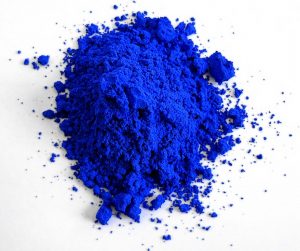The role of colorants and pigments in plastics these days involves much more than hues and shades. These additives now also are just as likely to impact factors such as processability, sustainability and compliance.
Replacing lead-based materials
Clariant Corp. is one supplier working to help get the lead out. The Swiss firm is promoting one of its organic yellow pigments — dubbed PV Fast Yellow H4G — as a replacement for lead chromate-based materials. European regulators banned lead chromate pigments from consumer plastics in that region in 2015, and the pressure is on elsewhere, as well, to use nontoxic alternatives, in food-contact applications and in various consumer products, including toys.
Clariant says H4G offers up to three times the color strength in polyethylene and PVC than conventional lead chromate yellows. Additionally, it notes, when used in combination with inorganic pigments, H4G comes close to matching the opacity and color of lead chromates. The material also is approved for food-contact use in Europe, China and the United States.
Carbon black masterbatches
At last fall’s big K 2016 show in Germany, meanwhile, Cabot Corp. rolled out additional grades of carbon black masterbatches for use with various polymers. The firm formulated the new UN2015, UN2017 and UN2019 grades in its Plasblak range with low levels of impurities to meet both European Union and U.S. food-contact regulatory requirements. That same product line also includes three grades targeted at non-food applications. Cabot says it developed those masterbatches with an eye toward meeting the need for greater levels of recyclate in raw materials in Europe and elsewhere.
Formulation advances are helping to drive sustainability in another way, according to Jeff Smink, president of Carolina Color Corp., a 50-year-old, family-owned maker of color concentrates for the plastics industry.
One aspect of the “green movement” that started with the packaging sector has now migrated into other, completely unrelated markets, he said, creating both challenges and opportunities for makers of colorants for plastics. Procter & Gamble Co. helped to get that ball rolling when it specified a certain percentage of post-consumer recycled (PCR) resin had to be used in its product packaging. That drove the development of three-layer bottles, with the middle layer being PCR. Now that same concept is being widely adopted in products as diverse as garbage cans and construction siding, etc.
Black and beyond
Most of those recycled resins, Smink explained in a Jan. 19 telephone interview from firm’s Salisbury, N.C., headquarters, are dark in color, if not black. “So if you want to put a bright color on the outside of the [product in question], it takes a lot of color to overcome that bleed-through of the black in the center.”

If, for example, you wish to achieve an organic red or yellow color on the exterior of an FDA-approved bottle, “you could never get the opacity to hide that black,” so you would have to try to tint that black middle layer to a lighter shade that won’t bleed through underneath and will help support the surface color. This can add a lot of cost to the coloring aspect of the package.
In 2015, Carolina Color introduced its next-generation G3 line of colorants for packaging, housewares, transportation, and lawn and garden applications. This followed the 2008 roll-out of its patented G2 technology, which featured highly loaded pigments and additives that are exceptionally well dispersed and can effectively distribute in both large and small parts.
“In some cases now with G3, we’re able to deliver enough pigment into that top layer that it masks the middle layer,” meaning it is no longer necessary to use colorants on that dark layer of PCR content, which can help to significantly reduce the overall coloring cost.
But that’s not always an easy sell, when one compares products only on a price-per-pound basis. That means “the sale has to come from the engineering or design group, where they understand what you’re doing,” Smink said.
Another trend, noted Matt Barr, Carolina Color’s CEO and Chairman, is that with the rise of high-speed injection molding, there also is a greater need to be able get parts out of the molds faster.
“In the past, a lot of molders would add the slip agent at the press itself, which also made it harder for them to control the amount of slip agent being used. Now we’re being asked to incorporate that into the color itself, so it’s a one-dose solution.”
“With our G2 and G3 technologies,” Barr claims, “we have the volume available to add that combination of color and slip [agents] at much higher levels than can be achieved in the industry today.”
Feeling blue – but stable

The November/December 2016 edition of Plastics Engineering magazine reported that “the name derives from its chemical content, which includes yttrium, indium, manganese and oxygen. Unlike many bright blue pigments, the material is extremely stable, probably owing to its accidental discovery after a researcher heated manganese oxide to about 1,200°C (or 2,192°F) to test its electronic properties.
“Importantly for its use as a pigment,” that article continued, “tests by an Oregon State research team led by chemist Mas Subramanian found that YInMn Blue has high ultraviolet absorbance and high reflectivity in the near-infrared region compared with conventional cobalt blue pigments.”
Forecasting with ColorForward
Pigments and colorants may be contributing to a variety of performance factors in plastics, but color will always be one of their most vital aspects. With that in mind, Clariant recently published the 12th edition of its annual color forecasting guide for the plastics industry. The speciality chemicals and masterbatches maker says It created the ColorForward concept to help brand managers and designers anticipate — years in advance — what colors will connect with consumers on a deep, emotional level.
Clariant reports that colors for 2018 will be “organic and tinged with gray.” It goes on to explain: “All four of the global social trends identified reflected an overarching feeling of sadness, fear and distrust of the conventional world as-it-is. Behind that, however, is what might be termed a ‘silver lining.’ A sense of resolve … of determination to endure and a cautious optimism that people can make a difference and things will get better over time. This melancholy mood is evident in the fact that all the colors are toned down and a little bit grey but, at the same time, warm, organic and hopeful.”
To learn more about the ColorForward 2018 trends and colors — creatively titled Newmorrow, LongitudeLatitudeAttitude, Through the Mirror, and Nerdylicious — go to www.colorworks.clariant.com.
The views, opinions and technical analyses presented here are those of the author or advertiser, and are not necessarily those of ULProspector.com or UL Solutions. The appearance of this content in the UL Prospector Knowledge Center does not constitute an endorsement by UL Solutions or its affiliates.
All content is subject to copyright and may not be reproduced without prior authorization from UL Solutions or the content author.
The content has been made available for informational and educational purposes only. While the editors of this site may verify the accuracy of its content from time to time, we assume no responsibility for errors made by the author, editorial staff or any other contributor.
UL Solutions does not make any representations or warranties with respect to the accuracy, applicability, fitness or completeness of the content. UL Solutions does not warrant the performance, effectiveness or applicability of sites listed or linked to in any content.



Many other colorant houses such as Badger Color offer these features, processes, color trend forecasting and more for both pellet and liquid forms. Badger Color has been developing colors and special effects for twenty years helping their customers amass industry awards for their products and designs.